For medical practices, guaranteeing smooth revenue flow starts long before claims are submitted. It begins at the front desk with accurate benefit verification. Failing to confirm a patient’s insurance eligibility can result in delayed payments, denied claims, or even lost revenue. In an industry where margins are thin and administrative tasks are overwhelming, accurate insurance verification isn’t just helpful but essential.
In an industry where profit margins are tight and administrative demands are high, understanding proper insurance verification is no longer just a best practice.
Unfortunately, many practices still face common yet preventable mistakes in this area. Incorrect patient details, overlooked secondary insurance, and failure to confirm active coverage can all disrupt cash flow and add to your staff’s workload. With constant changes in insurance policies and payer requirements, staying on top of eligibility checks demands attention, training, and reliable tools.
This guide will walk you through the most common insurance eligibility mistakes and provide actionable tips to help your practice avoid them. By refining your verification process, you can reduce claim denials, minimize billing errors, and improve your practice’s financial stability.
Seven Common Insurance Eligibility Mistakes to Avoid
Inaccurate or Incomplete Patient Information:
Even minor mistakes like a misspelled name, an incorrect birth date, or a missing insurance ID number can result in claim denials. These errors often go unnoticed until your practice faces delayed payments and must spend time and resources appealing rejected claims.
Solution: Train your front-desk staff to verify patient details at every visit. Encourage them to confirm information directly with patients and cross-check it with the insurer’s file. Even seemingly small details can make a big difference in claims being approved the first time.
Failure to Verify Active Coverage:
Assuming a patient’s insurance is still active can be a costly mistake. Patients may have switched plans, lost coverage, or missed premium payments without notifying your office. If your practice provides services without verifying active coverage, you risk delivering care that won’t be reimbursed.
Solution: Use electronic eligibility verification tools or payer portals to confirm coverage in real-time. This simple step can prevent costly oversights and help your staff identify potential issues before they become revenue roadblocks.
Overlooking Secondary Insurance:
Many patients have secondary insurance plans that help cover costs not paid by their primary insurer. If your practice doesn’t collect and verify this information, you could miss out on additional reimbursement.
Solution: During the registration process, ask patients if they have secondary coverage. Make sure your staff understands how to coordinate benefits between primary and secondary payers to confirm all eligible claims are submitted properly.
Not Collecting Copies of Insurance Cards:
Insurance details can change frequently. Relying on outdated information often leads to claim rejections or delays. Missing key details such as updated plan numbers, payer contact information, or preauthorization requirements can complicate your billing process.
Solution: Always scan and update insurance cards at each visit. Capturing both the front and back of the card guarantees you have all the details needed to submit clean claims.
Forgetting to Check for Coverage Changes:
Insurance policies and coverage rules are constantly changing. A service that was covered last year may no longer be reimbursable. If your staff doesn’t routinely check for updates, your practice may unknowingly provide services that patients are no longer eligible for.
Solution: Train your staff to ask patients about recent insurance changes during check-in. Additionally, automated eligibility verification tools can help identify coverage updates before services are rendered, reducing surprises for both your practice and your patients.
Manual Data Entry Errors:
Even the most experienced staff can make mistakes when entering insurance details manually. Typos, incorrect policy numbers, or mismatched patient records can easily lead to denied claims.
Solution: Investing in practice management software with built-in verification tools can significantly reduce human error. These tools can automatically pull patient data from verified sources, improving accuracy and streamlining the billing process.
Inadequate Staff Training:
Your front-office staff play a crucial role in your revenue cycle. Without the right training, they may overlook essential steps in the benefit verification process, increasing the risk of errors.
Solution: Provide regular training sessions to keep staff informed about the best practices, payer requirements, and policy changes. Equip your team with the knowledge they need to confidently verify benefits, manage complex cases, and identify potential issues before they impact your revenue.
Best Practices for Flawless Insurance Verification
Your practice needs to stay on top of insurance verification to minimize costly mistakes, Consider these best practices:
- Use automated eligibility verification tools to confirm active coverage.
- Request updated insurance details at every patient visit.
- Provide ongoing staff training to ensure your team is equipped to handle policy changes and verification processes.
- Establish a double-check system where a second staff member reviews high-risk verifications.
- Stay informed about payer policy changes to anticipate potential claim issues.
Conclusion: Strengthen Your Revenue Cycle with Smart Benefit Verification
While insurance eligibility mistakes may seem small, they can have a major financial impact on your practice. By addressing common issues like failing to verify active coverage, overlooking secondary insurance, or relying on outdated patient details; you can improve cash flow, reduce claim denials, and minimize billing errors.
Taking a proactive approach to benefit verification not only strengthens your revenue cycle but also improves your team’s efficiency and enhances patient satisfaction. Investing in proper training, automation, and structured processes will go a long way in safeguarding your practice’s financial health.
For expert guidance on improving your medical billing and insurance verification processes, visit Medetec’s Medical Coding & Billing Services.


